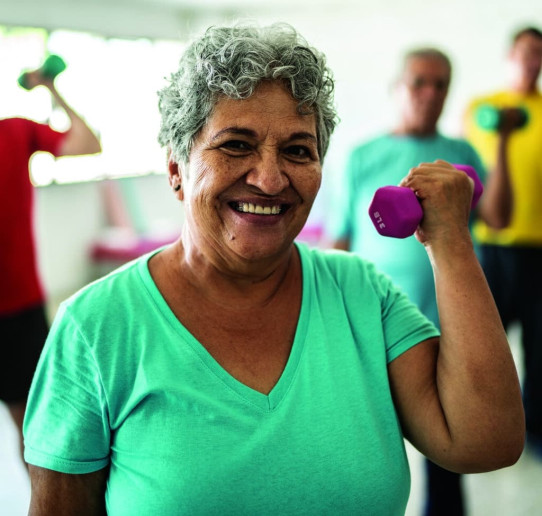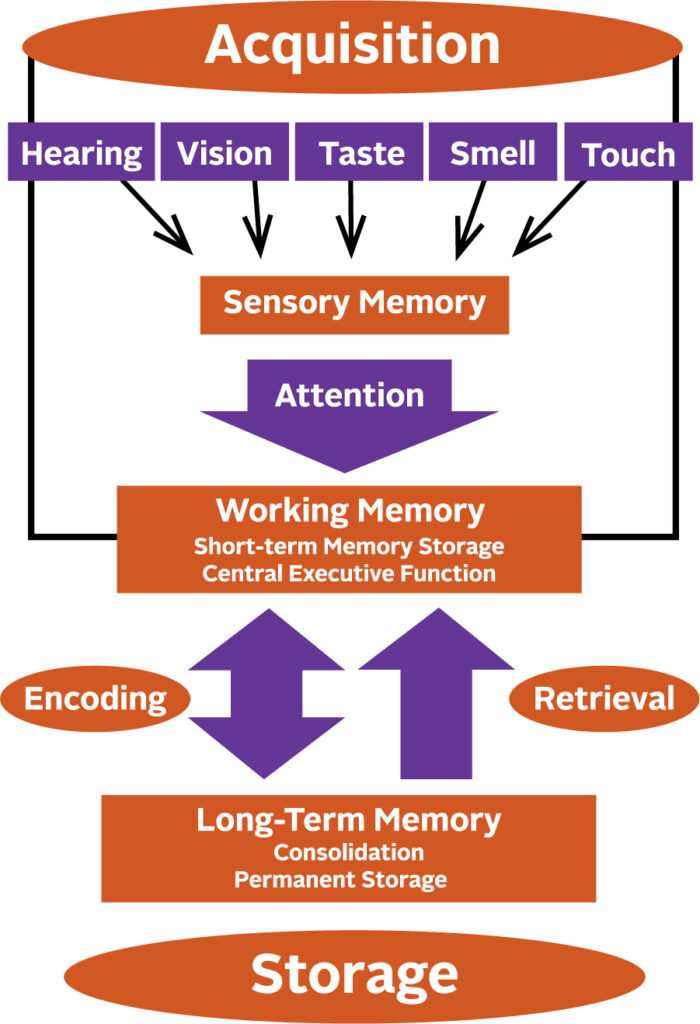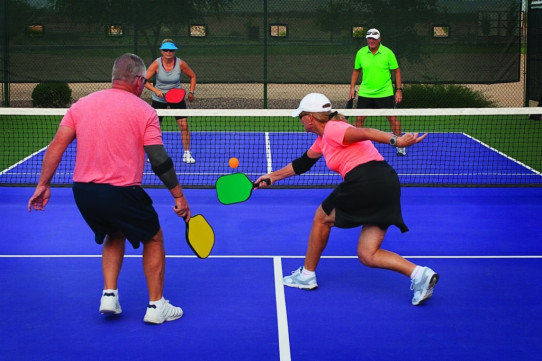Ageism, the Last Unacceptable Bias
“I’m having a senior moment.
I’m too old to try that.
I look good for my age.
It’s time to put her/him out to pasture.
These are just aches and pains from old age.
Sweetie, you don’t look a day over 29.
Ok boomer.
There will be a tsunami of aging dependents in the coming decade.”
These oft-used phrases may sound inoffensive but they’re actually examples of ageism, perhaps the only stereotype in America yet to be banished, or even fully recognized. Raising awareness of ageist beliefs as inaccurate at best, and physically and psychologically harmful at worst, is the work of a lifetime for a diverse group of medical and scientific advocates. Why is changing the narrative so important?
Research shows that ageism can influence health through three pathways: psychological, behavioral and physiological. Negative age stereotypes can increase biological markers of stress and may predict detrimental brain changes decades later, while also spurring worse health behavior, such as noncompliance with prescribed medications. A national poll on healthy aging showed those who regularly experienced three or more forms of ageism were less likely to rate their mental health as excellent or very good (61% vs. 80%) and more likely to report symptoms of depression (49% vs. 22%) than those who did not. Additionally, ageism can lead to inequities in healthcare, with age-based exclusions common in clinical trials, and older adults more apt to be left out of screenings, investigations and treatment for mental health issues.
Ageism: A Mental and Physical Toll
What may be most important to appreciate is how the internalizing of age stereotypes by older adults themselves can be an important determinant of health and well-being. Experts have found that negative self-perceptions of aging are associated with a higher prevalence for many of the most frequently seen health conditions among Americans, including heart disease, lung disease, diabetes, musculoskeletal disorders, and injuries, and tend to show more shrinkage of hippocampal volume in the brain. They may also show poorer memory performance and start to walk slower, reinforcing the negative loop around their aging process.
The Power of Positive Aging
Flipping the narrative, however, can result in dramatically improved outcomes. As reported in the Gerontologist, those who have more positive age beliefs live on average 7.5 years longer than those who harbor negative age beliefs. As the researchers noted: “If there were a pill that gave people an extra seven years of life in relatively good health, we would encounter very long lines at the pharmacy.”
The reasons for optimism around aging are based on science, not magical thinking. Consider that steep declines in physical and cognitive abilities are not inevitable parts of aging. According to the Administration on Aging, 80% of adults over 65 are not experiencing a physical or cognitive disability such as hearing impairment or memory loss that impacts their function, and 60% report only moderate or small impairments in their mobility. Procedural memory (e.g. how to ride a bike) is maintained in normal aging, and there is evidence suggesting abstract thinking and metacognition improve.
Challenging the Aging Myth
Despite the stereotype of people becoming more curmudgeonly with age, Manfred Diehl, PhD, a lifespan developmental psychologist, reports the opposite: “The conclusion from several meta-analyses is that in the personality area, we see quite a bit of positive development in terms of becoming socially more mature, with improved coping strategies and more regulation of emotions. Conscientiousness tends to increase at least until the mid-60s, possibly early 70s.”
Most remarkably, ongoing research at the Yale School of Public School by epidemiologist Dr. Becca Levy pointed to the conclusion that beliefs about aging rather than aging itself help explain why some older adults thrive while others do not. Her studies found that adults briefly primed with positive statements about aging showed improvements in their memory, gait speed, and balance that were measurable months later, and further generated increasing confidence in their abilities that endured over years. Additional studies suggest that positive beliefs about aging may protect against dementia, even among those with a high-risk gene.
Changing the Conversation Around Aging
How can we help shift the conversation? Start by increasing awareness of the culture of ageism around us and recognize how it can impact health rather than the actual aging process, encourages Levy.
You may also want to explore how to get involved in organizations that focus on bringing generations together, including:
Generations Over Dinner – A free global initiative to create meaningful experiences and conversations by hosting in-person or virtual multi-generational dinner events.
Generations United– A nonprofit network with a comprehensive database of intergenerational programs across the country.
CoGenerate –A nonprofit organization aiming to bridge generational divides and foster intergenerational collaboration.
When to seek help for mental health
Remember: it is not normal for older adults to be unhappy as they age. Seek help for these treatable medical conditions:
Anxiety
- Panic disorder: Panic attacks or sudden feelings of terror that strike repeatedly
- Obsessive-compulsive disorder: Repetitive, unwanted thoughts or rituals
- Post-traumatic stress disorder (PTSD): Nightmares, depression after a traumatic event
- Phobias: Extreme fear of something that poses little real danger
- Generalized anxiety disorder: Chronic worry about everyday activities
Depression
Feelings of intense sadness that last for weeks or months. Symptoms include:
- No pleasure in everyday activities
- Poor sleep
- Rapid weight gain or loss
- Low energy
- Unable to focus
While grieving a loss may look similar to depression, there are differences. A mix of good and bad days is common when grieving. With depression, feelings of emptiness are constant and don’t improve over time.
Sources:Aging Research Reviews; Breaking the Age Code; Contemporary Clinical Trials, NCOA, Helpguide.org

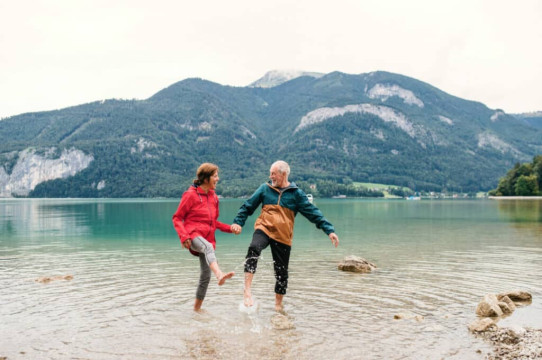

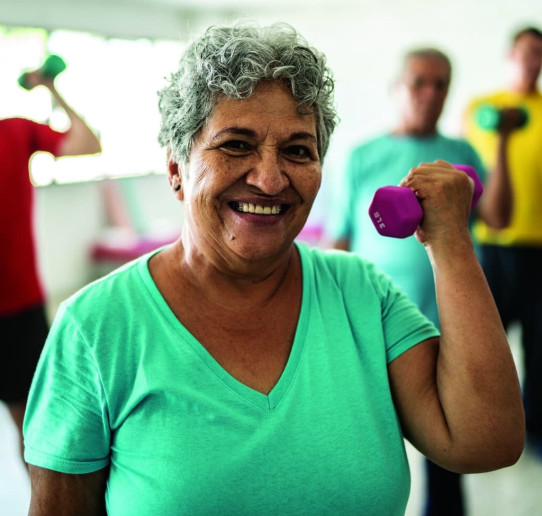
 Plant-based eating holds one of the most important keys to slowing biological aging, emphasizes Dr. Greger. Borne out in large studies from the National Institutes of Health/AARP and Harvard, replacing just 3% of daily calories from animal protein with plant protein was associated with a 10% decrease in risk of overall mortality. It may also help prevent Alzheimer’s dementia, an incurable disease. “There is a growing consensus that what is good for our hearts is also good for our heads, and high levels of blood cholesterol are recognized to be a major risk factor for Alzheimer’s. Switching to a healthy, whole foods diet lower in animal fats, eggs and dairy can help prevent arteries in the brain from becoming clogged with atherosclerotic plaque, which is thought to play a role in Alzheimer’s,” he explains. “It may even trump genetics, as seen in Nigeria, where the plant-predominant diet may be the reason for very low rates of Alzheimer’s disease among a population with some of the world’s highest rates of the Alzheimer’s gene. Genes may load the gun, but lifestyle pulls the trigger.” In studies of older adults, the benefits of a diet rich in dark green, leafy vegetables continues to emerge, associated with improvements in the brain’s processing speed and working memory, muscle mass and strength, and potentially helping prevent age-related macular degeneration.
Plant-based eating holds one of the most important keys to slowing biological aging, emphasizes Dr. Greger. Borne out in large studies from the National Institutes of Health/AARP and Harvard, replacing just 3% of daily calories from animal protein with plant protein was associated with a 10% decrease in risk of overall mortality. It may also help prevent Alzheimer’s dementia, an incurable disease. “There is a growing consensus that what is good for our hearts is also good for our heads, and high levels of blood cholesterol are recognized to be a major risk factor for Alzheimer’s. Switching to a healthy, whole foods diet lower in animal fats, eggs and dairy can help prevent arteries in the brain from becoming clogged with atherosclerotic plaque, which is thought to play a role in Alzheimer’s,” he explains. “It may even trump genetics, as seen in Nigeria, where the plant-predominant diet may be the reason for very low rates of Alzheimer’s disease among a population with some of the world’s highest rates of the Alzheimer’s gene. Genes may load the gun, but lifestyle pulls the trigger.” In studies of older adults, the benefits of a diet rich in dark green, leafy vegetables continues to emerge, associated with improvements in the brain’s processing speed and working memory, muscle mass and strength, and potentially helping prevent age-related macular degeneration. Activate autophagy, the body’s cellular recycling system, with regular aerobic exercise of moderate intensity, and daily consumption of spermidine, a compound found in foods including: beans, tempeh (made from fermented soybeans), white button mushrooms, mangoes, edamame, green peas, lentil soup, and in its most concentrated form in wheat germ. Also given the green light by Dr. Greger is coffee, for its abundance of polyphenol chlorogenic acid, an antioxidant thought to have a protective effect that is contained in all types of the beverage (decaffeinated, instant, and especially when brewed with a paper filter).
Activate autophagy, the body’s cellular recycling system, with regular aerobic exercise of moderate intensity, and daily consumption of spermidine, a compound found in foods including: beans, tempeh (made from fermented soybeans), white button mushrooms, mangoes, edamame, green peas, lentil soup, and in its most concentrated form in wheat germ. Also given the green light by Dr. Greger is coffee, for its abundance of polyphenol chlorogenic acid, an antioxidant thought to have a protective effect that is contained in all types of the beverage (decaffeinated, instant, and especially when brewed with a paper filter). Avoid French fries and chips, urges Dr. Greger, as the toxin acrylamide formed during the frying process may cause inflammation and inhibit autophagy; air fry potatoes instead. Also, put down the salt shaker and opt for salt-free seasonings or substitutes. “Cutting back on sodium appears to effectively make people more than a decade younger in terms of risk of premature death,” he says.
Avoid French fries and chips, urges Dr. Greger, as the toxin acrylamide formed during the frying process may cause inflammation and inhibit autophagy; air fry potatoes instead. Also, put down the salt shaker and opt for salt-free seasonings or substitutes. “Cutting back on sodium appears to effectively make people more than a decade younger in terms of risk of premature death,” he says. Minimize fish. Long viewed as a healthy choice, fish have become so contaminated with heavy metals, pesticides and other forever chemicals that despite their omega-3 fatty acids, there’s been a failure to consistently observe its beneficial effects, according to Dr. Greger.
Minimize fish. Long viewed as a healthy choice, fish have become so contaminated with heavy metals, pesticides and other forever chemicals that despite their omega-3 fatty acids, there’s been a failure to consistently observe its beneficial effects, according to Dr. Greger. Prevent bone fractures by focusing on strength and balance training. “The majority of age-related risk of bone fractures (85%) is due to falling, not osteoporosis, so addressing muscle loss may be more effective than the current focus on increasing bone mineral density with drugs,” says Dr. Greger. He cites multiple randomized trials showing a combination of resistance exercise to improve lower limb muscle strength and balance training can cut fracture risk nearly in half. And although boosting protein intake has been touted by others, Dr. Greger cautions: “If you put together all the randomized, controlled trials of adding extra protein to the diets of older men and women, you find no evidence that it increases muscle mass or strength, even in those with sarcopenia (excessive age-related muscle loss).”
Prevent bone fractures by focusing on strength and balance training. “The majority of age-related risk of bone fractures (85%) is due to falling, not osteoporosis, so addressing muscle loss may be more effective than the current focus on increasing bone mineral density with drugs,” says Dr. Greger. He cites multiple randomized trials showing a combination of resistance exercise to improve lower limb muscle strength and balance training can cut fracture risk nearly in half. And although boosting protein intake has been touted by others, Dr. Greger cautions: “If you put together all the randomized, controlled trials of adding extra protein to the diets of older men and women, you find no evidence that it increases muscle mass or strength, even in those with sarcopenia (excessive age-related muscle loss).”